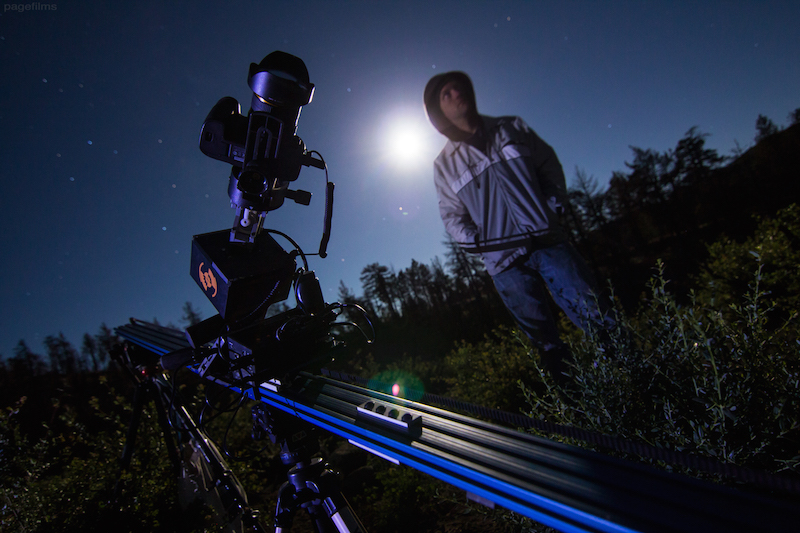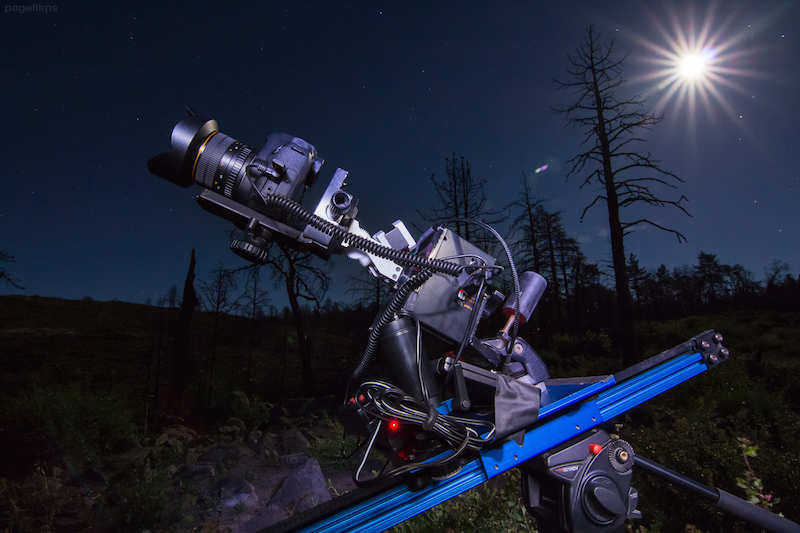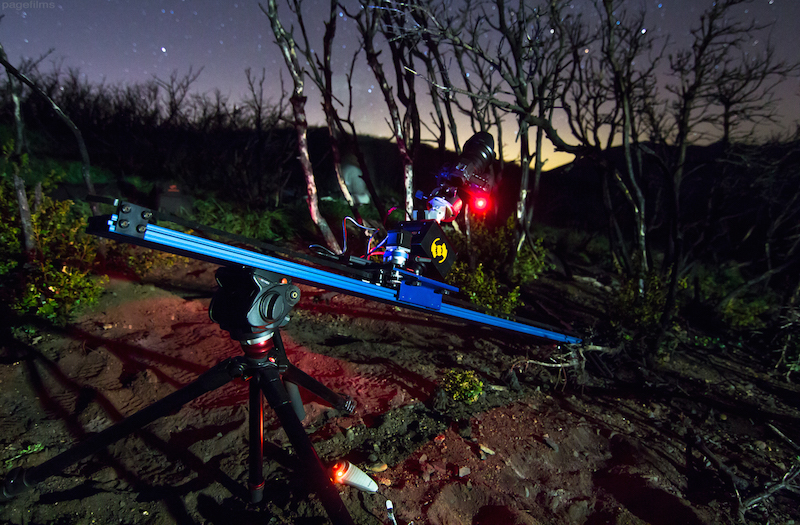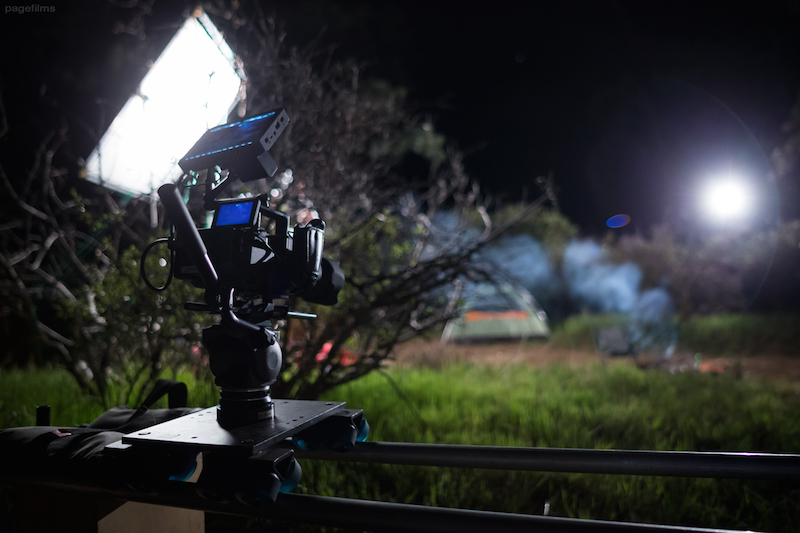- Published: Tuesday, January 12 2016 21:04
| Go to Lance Page's Part I - Introduction | Go to Lance Page's Part III - The Fire Within |
Part II - Ride the Sky
In early 2014 I was exploring one of my favorite camping locations up on Mount Laguna which is just an hour drive east of San Diego. From the road I noticed a tree that was perched at the edge of a big forest ravine that had been burnt in a forest fire. The tree was charred black with jagged sharp branches and it seemed to stand out among the other scorched trees and shrub. It’s backdrop was just as impressive with opportunities for some really nice compositions using the mountains and sky.

Screengrab from ‘Ride the Sky’
Shortly after discovering this location I came up with an idea, I knew that from the perspective of Earth’s northern hemisphere, the stars appear to rotate around the North Star (Polaris) due to the rotation of the Earth. I had seen it and captured it in my own time-lapse sequences. But what if the camera rotates with the stars in a time-lapse? All I needed to do was rig my camera on my Emotimo TB3 motorized head facing up so the pan function serves as a roll or pivot instead of a pan. Then I could point the whole camera rig at Polaris, place the north star right in the middle of my frame and rotate the camera counter clock-wise slowly through the night as it captures exposures.

Three-axis Polaris pivot time-lapse rig.
I decided to experiment with this concept and went back to Mt. Laguna to my favorite tree. I realized that when I framed up my shot, Polaris was dead center behind the tree. It was meant to be, so I began executing my idea and I was surprised with how well it worked right off the bat. I basically just guess and checked the parameters and figured out that I could rotate the camera about 90 degrees in around 4.5 hours. The movement was not perfect but I realized it really didn’t need to be. As long as it was close enough, the effect presented itself nicely.

Lance watching the robots do their work on a multi-axis setup.

Motorized camera rig pointing toward Polaris.
I began using this technique at various locations around Mt. Laguna and spent a lot of time collecting North Star pivot time-lapses. I produced all of the time-lapse content by myself in often freezing temperatures and harsh, windy conditions. I would typically capture two sequences in a night, one after another and I’d take naps while the robots did their work. One of the hardest parts of the production was scouting for pivot shots. I had to find foreground elements that always worked in the composition while looking directly north. I used an app called Star Walk to find Polaris during the daytime. I’d arrive on the mountain in the afternoon and scout for my shots until sunset, then I began rigging my gear in time to start a sequence by dark.

Using Star Walk app to find Polaris while scouting for shots.

One of the Polaris pivot setups from Ride the Sky.
After a bunch of trips up to the mountain I finally felt satisfied with my time-lapse sequences but I wanted to add a narrative scene to the film as well. Something that would set it apart and allow it to dabble in the short film genre in addition to time-lapse. I had the opportunity to collaborate with my friend Chris Patterson of Refraction Film on a video shoot up on the mountain. Since I love to camp out under the stars and stare up at the night sky I decided to put myself in the film doing just that, but in a very cinematic fashion. Chris and I rigged up a scene in the forest that he shot using his Sony FS700. The narrative addition serves as an introduction to the Polaris pivot sequences, transitioning into the time-lapse using a very cerebral and psychedelic style.

Chris Patterson rigging up his Sony FS700 on Emotimo’s TB3 head for the title sequence.

Our camping scene set up and ready to go.
After compiling all of the content and plugging in a fantastic and trippy original score by Derrek Domino, I finally released ‘Ride the Sky’. It was received very well online, earning a Vimeo Staff Pick and over a half million views. Ride the Sky felt like my work’s introduction to the world, I was so incredibly humbled by all the amazing responses. And it all started with a simple fascination with the stars and a fresh idea in astro time-lapse.
Ride the Sky
Later that year I began work on a new and exciting project, this time I wanted to focus on one of Earth’s most fascinating phenomena, lava. Fortunately I was born and raised in Hawaii on the slopes of the world’s most massive mountain, Mauna Loa, which happens to neighbor one of the most active volcanoes on the planet, Kilauea.

Kilauea Volcano’s summit crater, Halemaumau with it’s massive lava lake.
| Go to Lance Page's Part I - Introduction | Go to Lance Page's Part III - The Fire Within |








Comments